Dipascus sylvestris, Herts. 1904
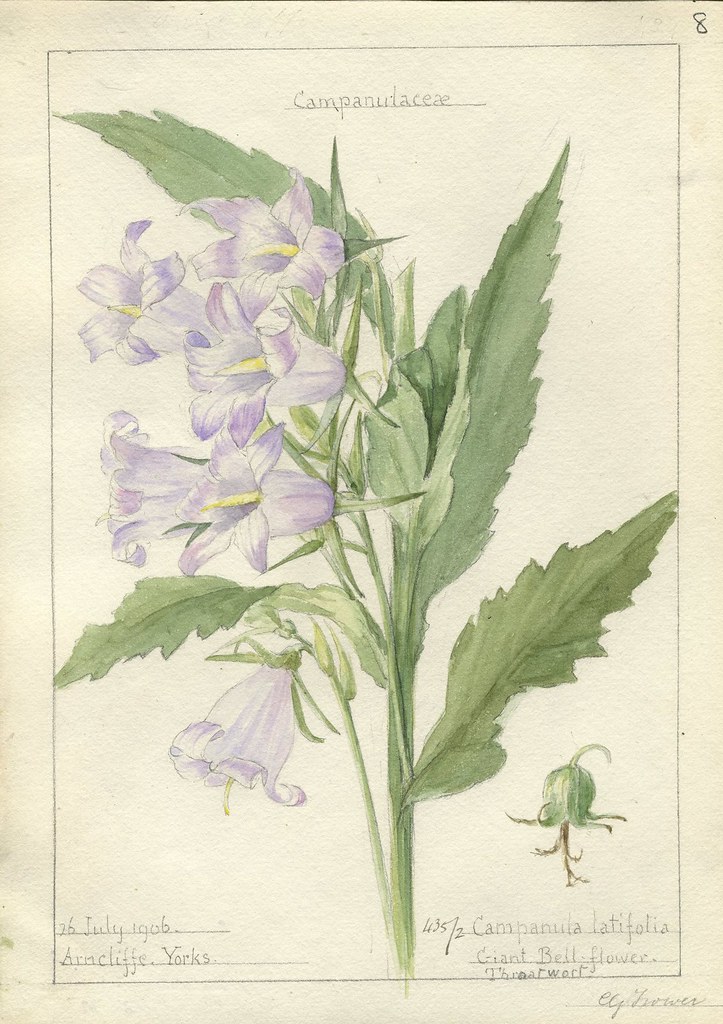
Campanula latifolia, Yorkshire, 1906
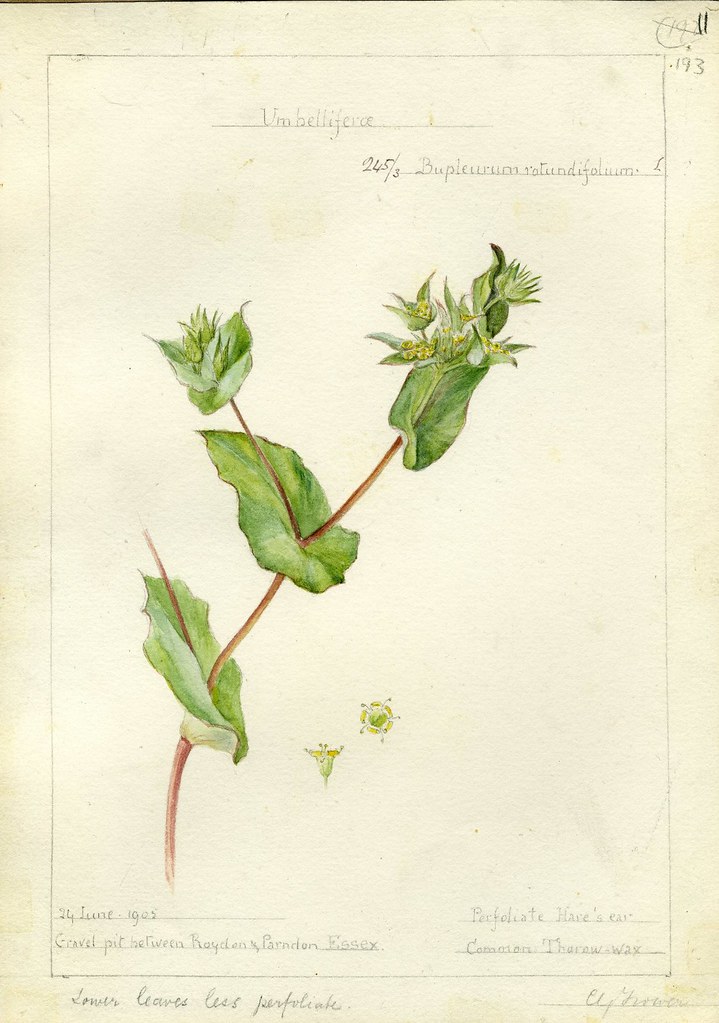
Bupleurum rotundiflorum, Essex, 1905
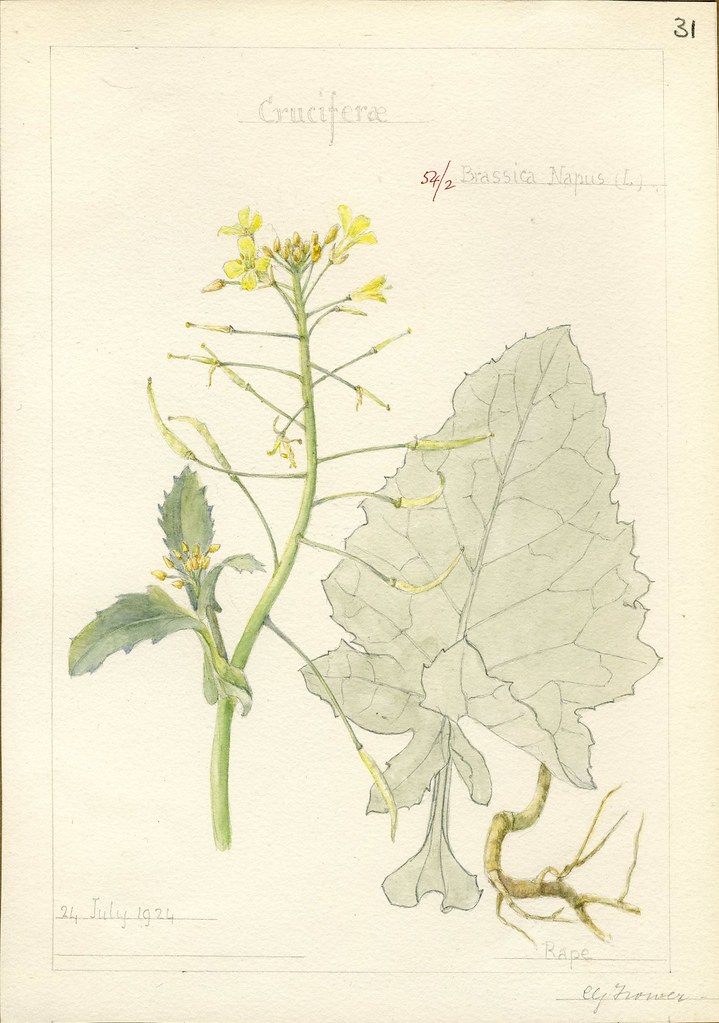
Brassica napus, 1924
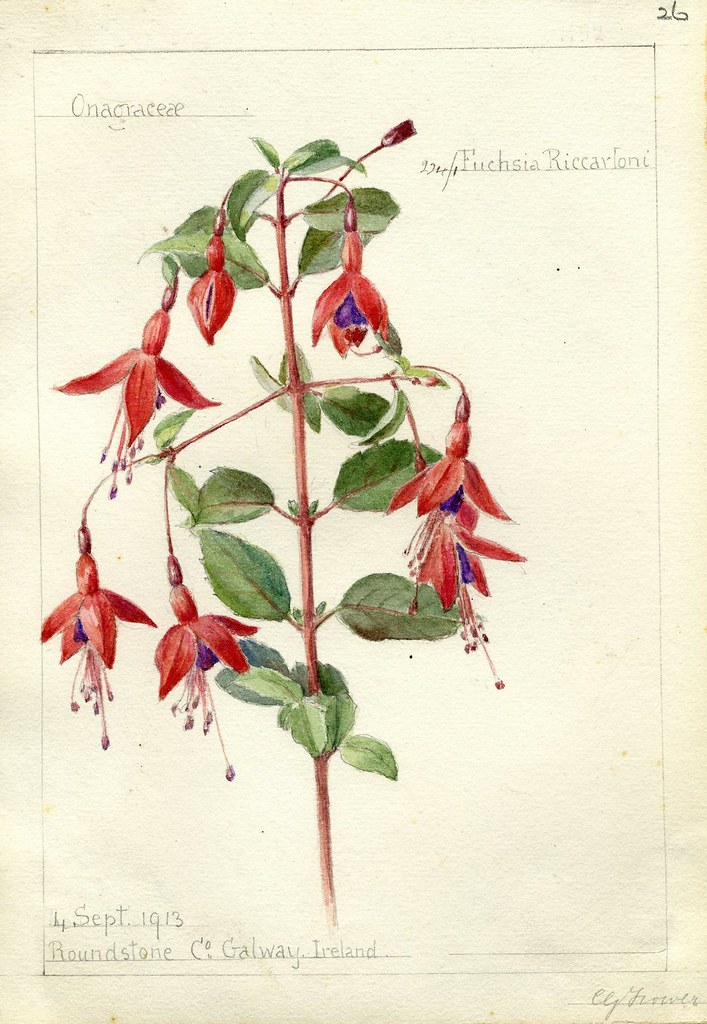
Fuschsia riccartoni Hort. County Galway, 1913
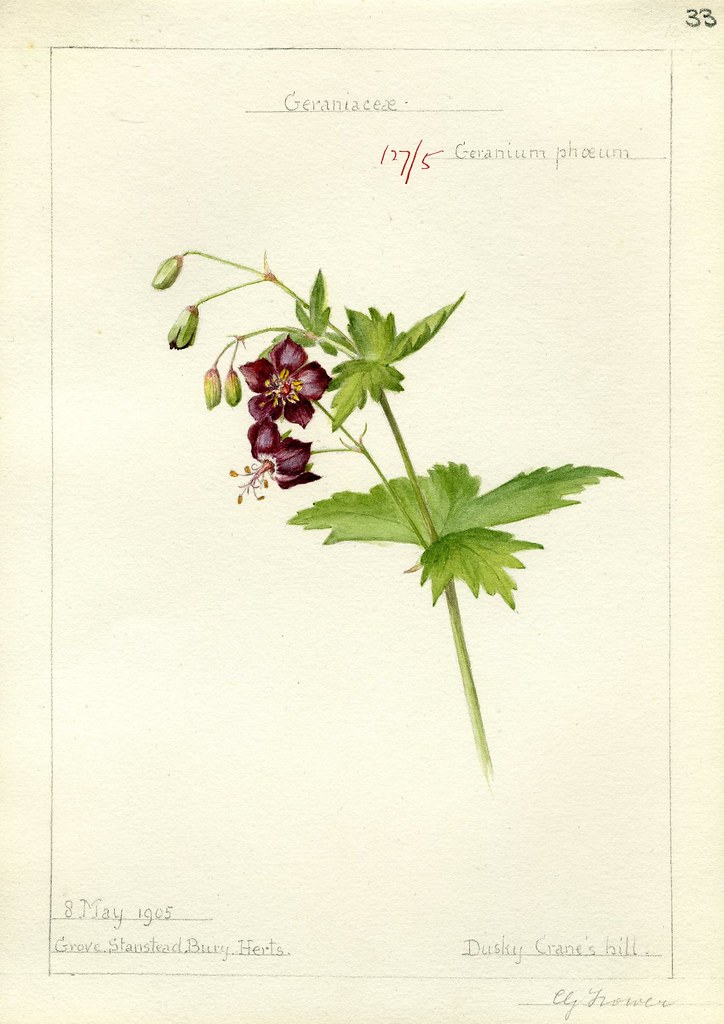
Geranium phoeum, Herts. 1905
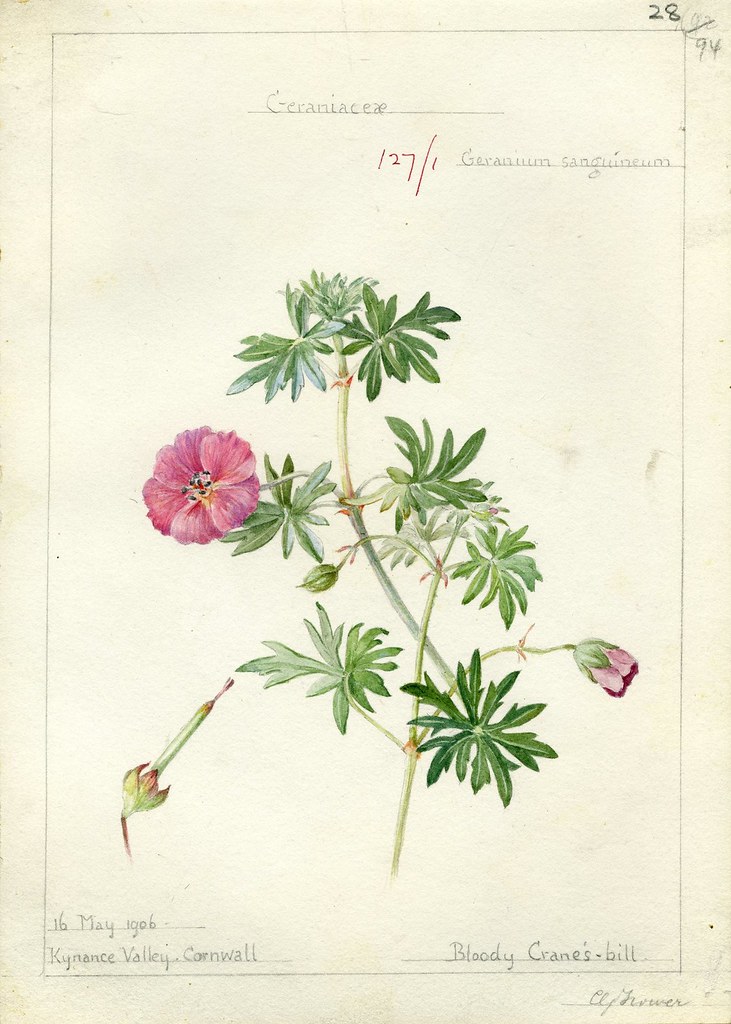
Geranium sangiuneum, Cornwall 1906
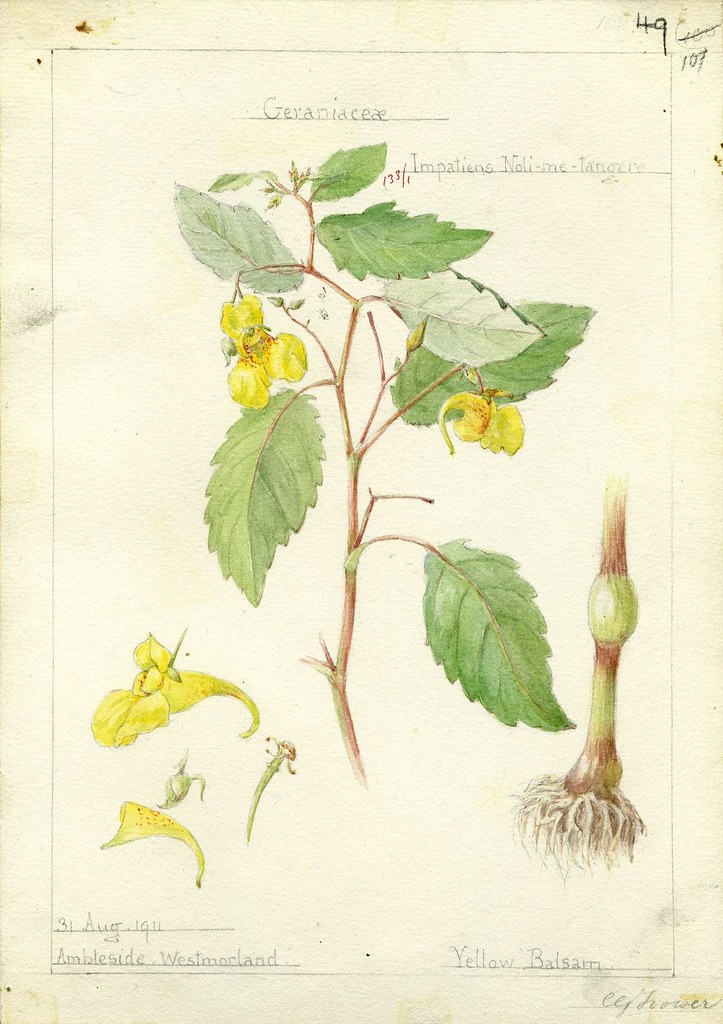
Impatiens noli-tangere, Cumbria 1911
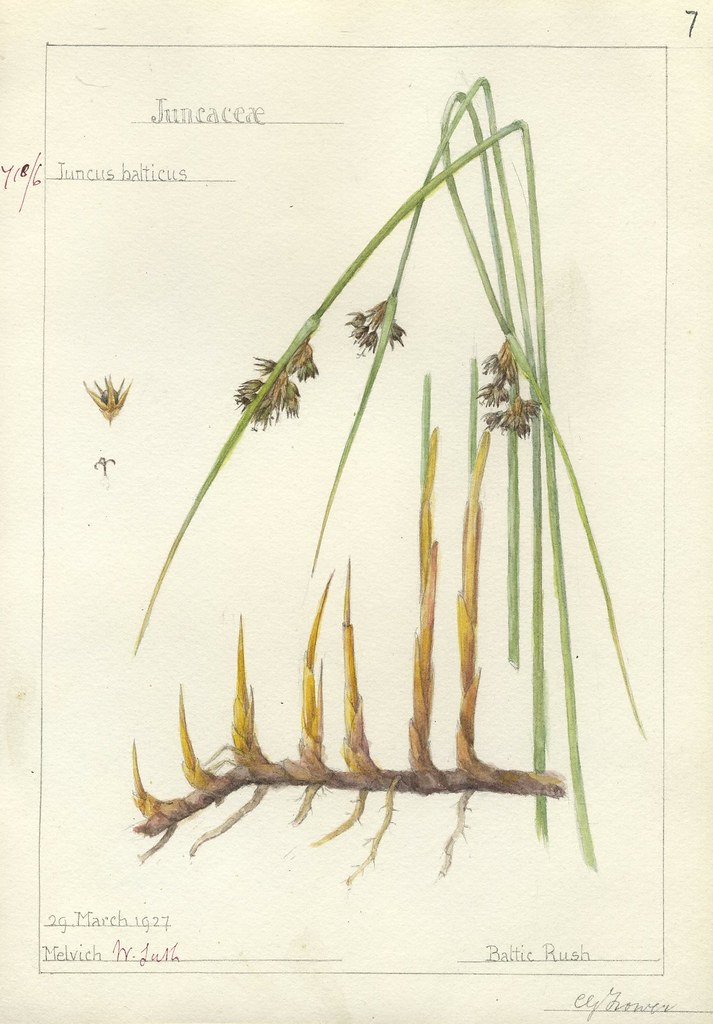
Juncus balticus 1927
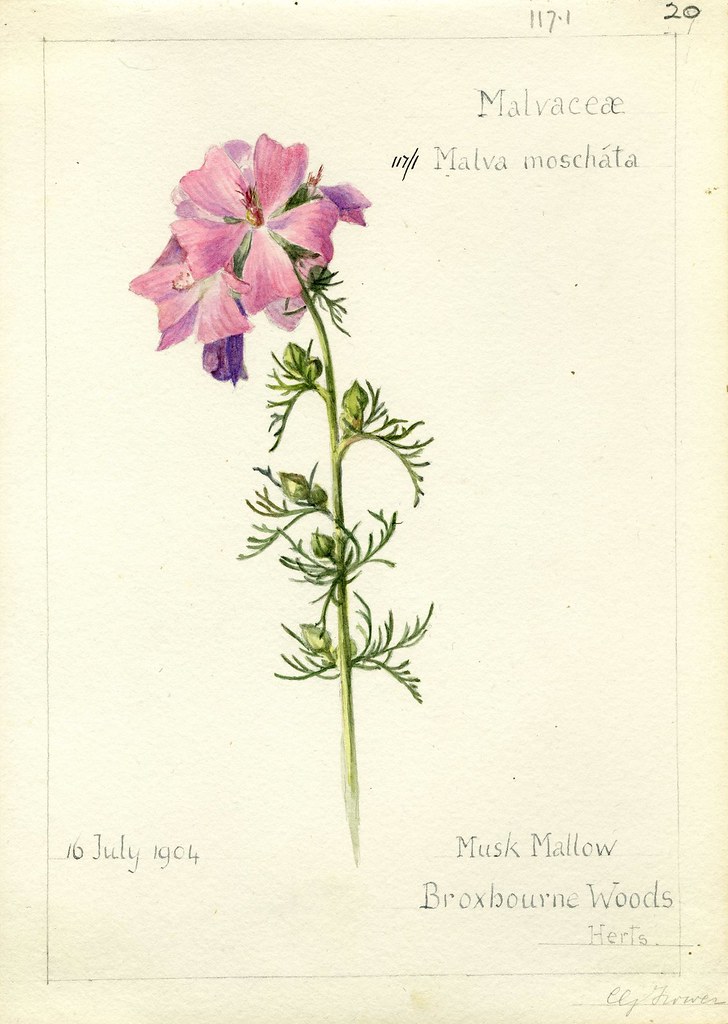
Malva moschata, Herts. 1904
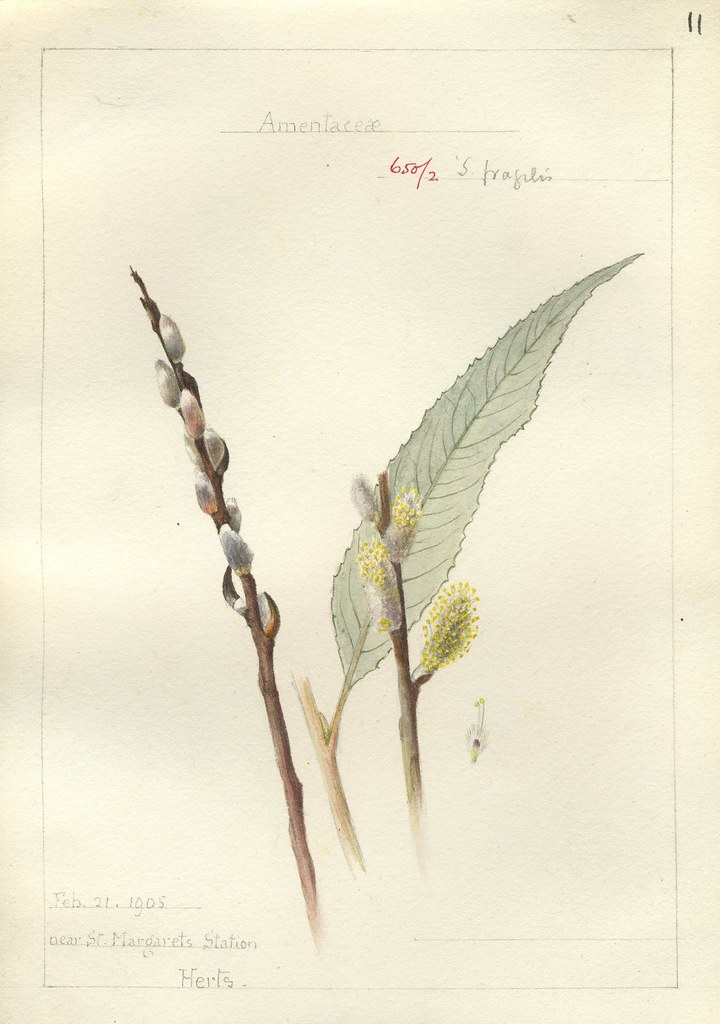
Salix fragilis, Herts. 1905
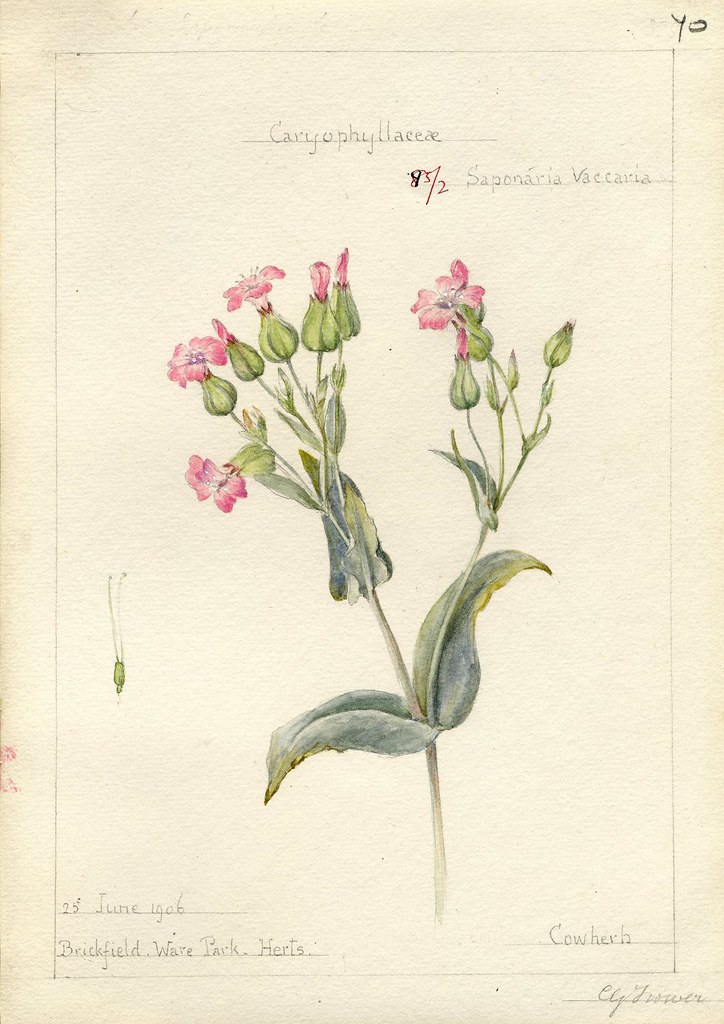
Saponaria vaccaria, Herts. 1906
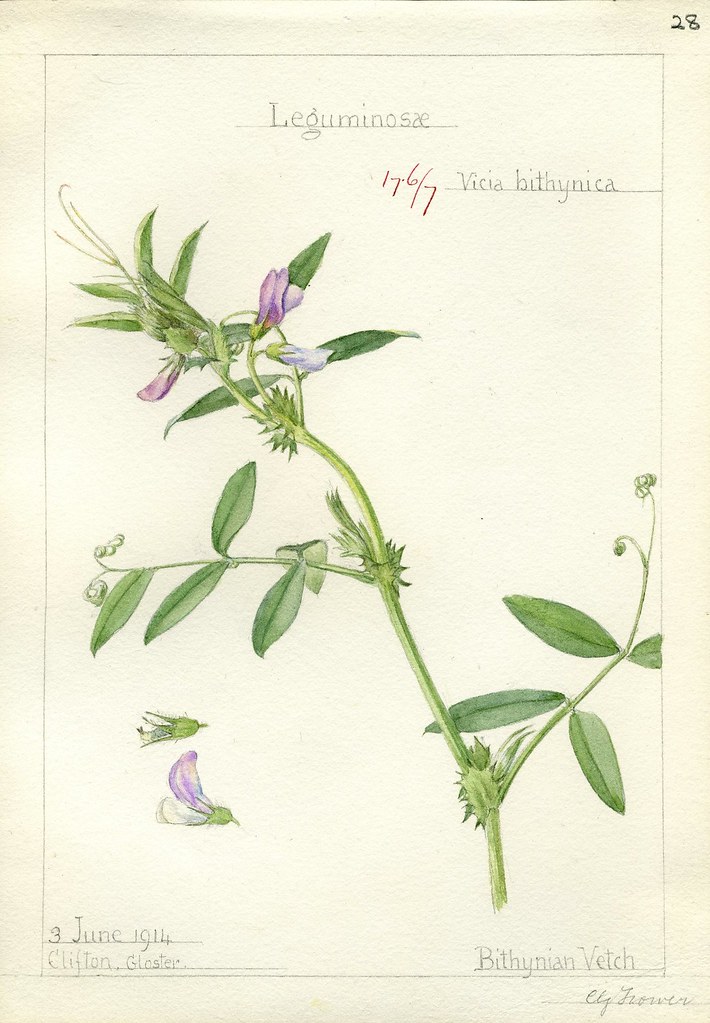
Vicia bithynica 1914
Georgina Trower (1855-1928) produced over eighteen hundred delicate and faithful sketches of (predominantly) British plants in the first couple of decades of the 20th century. She was helped by her sister Alice who wrote to the leading amateur botanist of the day, George Druce, seeking his help in supplying fit specimens for her sister to draw.
Druce apparently proved to be a useful critic of Trower's painting technique and he duly mustered together a large number of specimen contributors (including himself). After the Trower sisters had died in the late 1920s, Truce acquired the collection which he then bequeathed to Oxford University.
"This unusual collection, together with an extensive archive of correspondence, shows how fruitful connections were made between artist and botanist and how serendipity influenced both the choice of species painted and the areas from which these species were collected." [source]
"There were two distinct periods of artistic activity: 1904-1917 and 1921-1928. Excluding Alice's own contribution, 76 people contributed plants for Charlotte to paint. By far the greatest contribution was made by Druce (272 plants). The vast majority of plants are from Britain and the Channel Islands (1747) and 47 are from the island of Ireland. Approximately 1400 taxa are represented in the collection although the collection is biased towards sedges (220 watercolours), daisies (160 watercolours) and beans (101 watercolours). Only two grasses are represented. Trower was awarded the RHS's Grenfell Medal for her sedge watercolours." [source]
The Trower Botanical Illustrations are hosted by Oxford University Herbaria. The web architecture is a little unusual, for reasons that escape me, but not too difficult to navigate. The easiest thing to do is to just put a letter in the search box and species name will automagically appear.
I have scanned through the majority of the database and I would be surprised if all of the Trower watercolour paintings are there. I would have guessed that only half or less of the collection had been so far digitised. [I could be wrong!] Unfortunately, there is only a cursory overview available at the source site and very little commentary anywhere else on the web.
nb. The majority of captions above include "Herts." - this refers to Hertfordshire, the county where the Trower sisters lived.
Source | article abstract | via Institute of Historical Research* *I think*
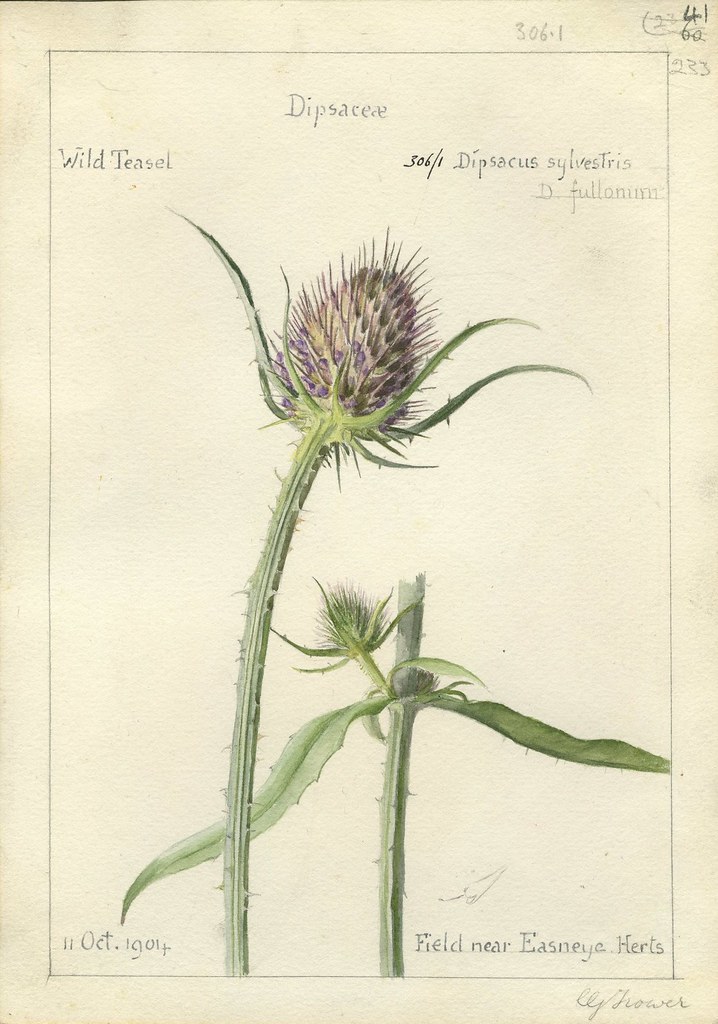



















6 comments :
Very beautiful works, but they seem a tad academic: almost as if there's a bit of vivacity missing from them.
I understand the observation but I think the approach here is laudable in its own right. It's as much an exercise in scientific reporting as it is an artistic project. I respect that (attempt at) fidelity. We are so used to florilegia being photoshopped -- or the equivalent analogue process -- that accurate rendering has less pizazz by comparison. A few more examples from the collection were included in the set, by the way.
so beautifully "non-Redouté"...
Thank you for describing how to search the Oxford University collection of Trower's works- you made it much easier. I find her illustrations to be beautifully straightforward, though I understand EEH's comment above; perhaps one has to be a gardener for a full appreciation of this botanical "reportage". The Oxford University has done a terrific job of scanning these and I've had a marvellous evening exploring and dreaming of plants!
I find that I modulate the 'flavour' of my appreciation to suit the context. By that I just mean that I can be equally pleased by technical virtuosity festooned with artistic embellishment as well as by the workman-like fastidiousness and consistency from the 'reporters'.
I suppose I approach a body of work with an open mind as to its area of aesthetic or artistic qualities (or otherwise). These days I'm unsure as to whether that attitude manifests as a result of curating this site for so long or if I am, in fact, even-handed within myself.
This is so very lovely, I have family members who have done numerous studies on this very subject and you bring me to a reminder of there studying days. I myself just love the pictures and the outward look of it all too very much to go very much deeper into it all. Until recently, have studied just a bit more. Such an inspiring and beautiful page for any lover of gardening to behold, really!
Post a Comment
Comments are all moderated so don't waste your time spamming: they will never show up.
If you include ANY links that aren't pertinent to the blog post or discussion they will be deleted and a rash will break out in your underwear.
Also: please play the ball and not the person.
Note: only a member of this blog may post a comment.